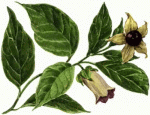Botany
|
26 february 2015 06:37:49 |
| High-throughput deep sequencing reveals that microRNAs play important roles in salt tolerance of euhalophyte Salicornia europaea (BMC Plant Biology) |
|
Tweet Background:
microRNAs (miRNAs) are implicated in plant development processes and play pivotal roles in plant adaptation to environmental stresses. Salicornia europaea, a salt mash euhalophyte, is a suitable model plant to study salt adaptation mechanisms. S. europaea is also a vegetable, forage, and oilseed that can be used for saline land reclamation and biofuel precursor production on marginal lands. Despite its importance, no miRNA has been identified from S. europaea thus far.
Results:
Deep sequencing was performed to investigate small RNA transcriptome of S. europaea. Two hundred and ten conserved miRNAs comprising 51 families and 31 novel miRNAs (including seven miRNA star sequences) belonging to 30 families were identified. About half (13 out of 31) of the novel miRNAs were only detected in salt-treated samples. The expression of 43 conserved and 13 novel miRNAs significantly changed in response to salinity. In addition, 53 conserved and 13 novel miRNAs were differentially expressed between the shoots and roots. Furthermore, 306 and 195 S. europaea unigenes were predicted to be targets of 41 conserved and 29 novel miRNA families, respectively. These targets encoded a wide range of proteins, and genes involved in transcription regulation constituted the largest category. Four of these genes encoding laccase, F-box family protein, SAC3/GANP family protein, and NADPH cytochrome P-450 reductase were validated using 5′-RACE.
Conclusions:
Our results indicate that specific miRNAs are tightly regulated by salinity in the shoots and/or roots of S. europaea, which may play important roles in salt tolerance of this euhalophyte. The S. europaea salt-responsive miRNAs and miRNAs that target transcription factors, nucleotide binding site-leucine-rich repeat proteins and enzymes involved in lignin biosynthesis as well as carbon and nitrogen metabolism may be applied in genetic engineering of crops with high stress tolerance, and genetic modification of biofuel crops with high biomass and regulatable lignin biosynthesis. |
| 96 viewsCategory: Botany |
 The leaf angle distribution of natural plant populations: assessing the canopy with a novel software tool (Plant Methods) The leaf angle distribution of natural plant populations: assessing the canopy with a novel software tool (Plant Methods)Two-dimensional multifractal detrended fluctuation analysis for plant identification (Plant Methods) 
|
| blog comments powered by Disqus |
MyJournals.org
The latest issues of all your favorite science journals on one page
The latest issues of all your favorite science journals on one page



